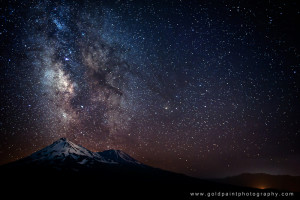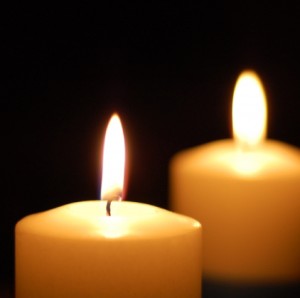
Milky Way
The darkest night I ever spent was on top of Steens Mountain in the southeastern corner of Oregon, far from artificial light sources, hundreds of miles from any population center. The moon rose very late that night and the stars were absolutely breathtaking. I saw more night sky than I had ever seen — parts of the Milky Way I didn’t know existed, multitudes of meteors, and so many stars.
Many Western Christian churches celebrate Advent in the four weeks preceding Christmas. Most Episcopal churches carve out a solemn and simple space during this time, a sanctuary from the surrounding Christmas craziness. Typically you won’t hear Christmas Carols or see Poinsettias. Not yet. Most Episcopal churches are peaceful havens where the focus is on holy waiting – both for the return of the light and for the birth of a baby.
Many Advent prayers and hymns focus on the light, so much so that it seems to me we’re afraid of the dark. The collect (prayer) for the first Sunday of Advent contains this phrase: “… give us grace to cast away the works of darkness and put on the armor of light …” I protest: “There’s grace and healing in darkness! Mary’s womb was dark! Darkness is necessary!!”
It’s also worth noting that many spiritual feminists and people of color hear the church’s plea for light as misogynist and racist, as women and non-White people have historically been denigrated, marginalized, and exploited precisely because of their perceived association with dirt and darkness in all its forms.
David Owen writes, in a 2007 New Yorker article about light pollution, that we actually make ourselves less safe when we artificially illuminate the darkness. “Diminishing the level of nighttime lighting can actually increase visibility,” he says. Among many other examples of situations where illumination creates blindness, he cites “criminal-friendly” lighting that’s so bright it turns everything around it into an “impenetrable void.” Much “security” lighting is anything but secure.
Owen, in the same article, reports that lighting our interior spaces disrupts our circadian rhythms, which affects obesity, sleep, and perhaps some forms of cancer. And lighting the outdoors harms our fellow creatures, especially migrating birds, insects, and sea turtles.
We used to watch our world get dark. We used to look at the night sky. Stars and the night sky have been an important part of becoming and being human. We’re wired for star-gazing. Darkness is necessary, and we avoid it to our detriment. Gestation and germination require darkness – the warm nurturing darkness of wombs, and the holy soil of Earth. Darkness is necessary for birth and renewal.
My family used to live in a suburb of Chicago, where only a smattering of bright, brave stars penetrated the “sky glow” of that city. Every summer we’d head north to Lake Superior on Michigan’s Upper Peninsula. And every summer, at least once, we’d see the Northern Lights. Our Aurora wasn’t the full-blown psychedelic light show of polar regions. Our Aurora was a shimmering and flickering magic dance of white light, arcing above the dark vastness of water, sporadic and ephemeral and enchanting. We only saw these Northern Lights because we were in a very dark place, sitting on the beach of that immense lake, paying attention.
My husband and I took in last fall’s lunar eclipse out among the sage and juniper of Oregon’s high desert. We perched ourselves on a ridge formed of lava. We watched the full moon slowly rise and then disappear as Earth moved between the sun and the moon. As the moon was eclipsed, more and more stars appeared. As the moon slowly reappeared, the dimmer stars began to wink out, one by one. Oh, holy night indeed.
Sometime in the next few weeks, the longest nights of the year here in the Northern Hemisphere, let’s go out to a dark place. Let’s dress warmly and take a thermos of hot chocolate and maybe a companion if they can be quiet. Let’s sit. Let’s settle into the darkness and just let it be dark. Let’s welcome the gifts darkness has to offer us. She’s waiting.
 There is an old Greek myth about ‘halcyon days’. The idea springs from a story about the halcyon (from the kingfisher family), about which Aristotle has this to say:
There is an old Greek myth about ‘halcyon days’. The idea springs from a story about the halcyon (from the kingfisher family), about which Aristotle has this to say:
